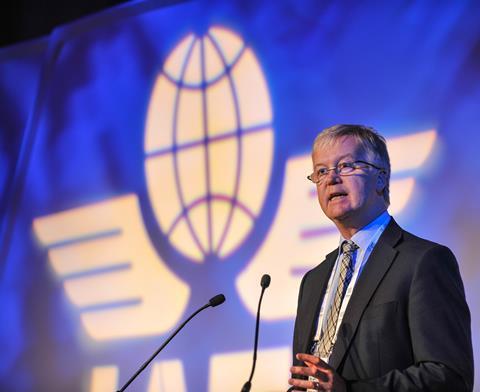Airline trade body IATA has lowered its expectations for global passenger traffic this year amid a plateauing in the recovery and bleaker forward booking indicators.
IATA now anticipates passenger traffic, as measured in RPKs, this year will be 66% down on 2019 levels. This marks a deterioration on its previous forecast that traffic across the year would be 63% down on last year’s levels.

The grimmer outlook reflects a slowing in the air traffic recovery. Traffic data for August - the peak month for the airline industry, released by the association today - shows passenger traffic remains 75% down on the same month last year.
”Domestic markets were encouraging – they were at a point that was roughly 50% down on last year. The real problem remains in international air travel,” IATA chief economist Brian Pearce explains during a media call today.
”International air travel markets were down 88% in August, and what we can see is….they are levelling off. We saw a slightly slower pace of improvement from July to August than we had in the previous few months.”
More worrying are indicators from September that not only has the recovery tapered off, but that in some markets it is regressing.
”Looking at the flight data, which gives us a clue to what happened in September – it’s clear that while our data for August shows a further improvement, that improvement more or less stops early in the month. We see the market reaching an inflection point,” says Pearce.
“Domestic flights have not improved in the last six weeks – and the one international market where we had seen some kind of revival within Europe…has clearly been hit by the renewed rises and second wave of coronavirus. And flights from many of these markets have actually been declining.”
Neither does forward booking or consumer confidence data for the fourth quarter provide any reason for optimism. ”Until we see stronger consumer confidence, we are clear that the revival in leisure passenger travel will be relatively weak. Indeed we think we see this in forward bookings data,” says Pearce.
”The consequence of all of this is we are now less optimistic about growth in air travel than we were when we last did our forecast in July. We thought we would get to a point in December where global RPKs were 55% down last year. They were 75% down in August and given the bookings profile we see, we think we will only get to minus 68% by December.”
As a result it has now lowered its overall projections for passenger traffic to be 66% down on the 2019 figure.
Load factors in August were still down almost 28 percentage points at 58.5%. “They have improved from that low point in April, but we think both domestic and international load factors are well below what would be necessary to break even – so the industry is restarting but it looks as though it is still burning through cash in its operations at the moment,” says Pearce.
”We do think the coming winter months are going to be pretty challenging for the airline industry,” he adds.
IATA has not yet revised its financial outlook for 2020 in light of the bleaker traffic outlook. It has previously forecast industry losses of a staggering $84 billion for this year.
Pearce though does note the slower recovery in traffic does not particularly impact its longer-term forecast for when passenger traffic may return to pre-crisis levels.
“Those forecasts which were for a recovery of 2019 levels by 2024, were conditional on getting a vaccine some time in the second half of next year and at the moment that seems to be on track – so the later years forecast we have not changed,” he says.
“Our concern is more the next 12 months – and clearly we are hoping an effective and cheaper testing regime might improve the situation.”





























